Craving something cool, creamy, and no-fuss? This mango sago pudding is a chill-and-serve dessert that's fruity, comforting, and comes together with just a few simple ingredients. No oven needed, and yes-it's totally make-ahead friendly.
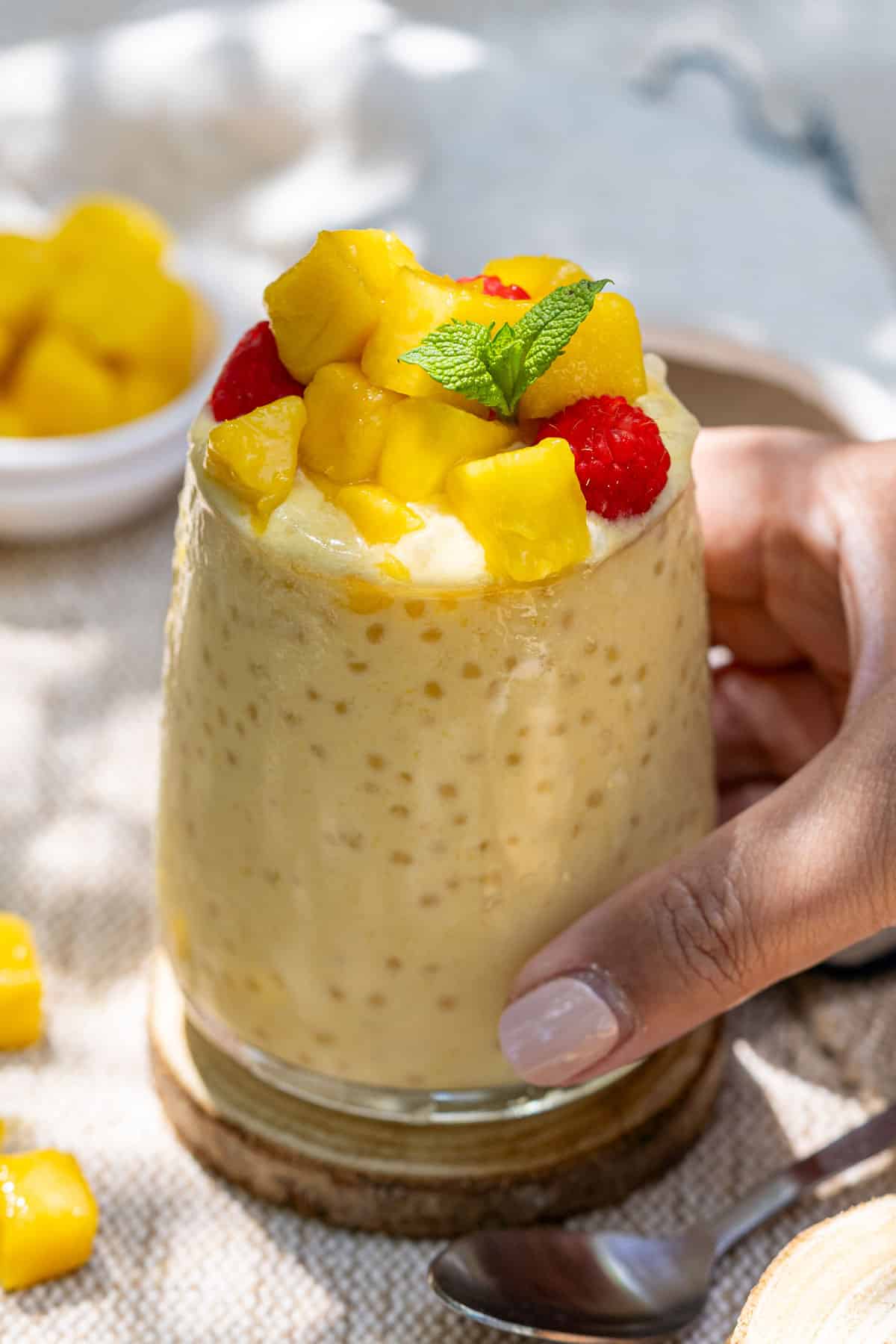
📮 Save this recipe for later!
Jump to:
- From our campsite to your kitchen
- So… what is sago, anyway?
- Why you'll love this recipe
- Ingredients you'll need
- How to cook sago or tapioca pearls
- Substitutions and variations
- Watch the video recipe
- Step-by-step instructions
- Our best tips
- Serve, store, and make-ahead guide
- Frequently asked questions
- More chilled dessert recipes
- 📖 Recipe
- 💬 Comments
From our campsite to your kitchen

We first tested this mango sago pudding in our home studio, and honestly-it was love at first bite. Creamy, fruity, comforting… and way easier than it looks.
A few days later, we were camping with our motorhome when the idea popped back into our heads. We already had all the ingredients with us (because, of course, we packed dessert things), so we asked our Instagram fam if they'd want to see us make the mango sago pudding there at the campsite. The answer? A big YES. So we did-right under the trees, with birds chirping and the breeze doing its thing.
That's how easy this mango sago recipe is-you don't need a fancy kitchen or special tools. Just a pot, a spoon, and a few simple ingredients.
If you're into everything this mango sago pudding is about-delicious, no-bake, and super easy-then you'll probably love our high-protein strawberry cheesecake cups, 3-ingredient lemon mousse (no eggs needed!), and those crowd-favorite no-bake Biscoff cheesecake cups and raspberry cheesecake shots. They're all chill-and-serve desserts that feel special without the effort.
So… what is sago, anyway?
Despite the name, what we're using here isn't technically "sago" from the sago palm-it's small tapioca pearls made from cassava starch (yep, the same root veggie behind tapioca pudding and boba).
But in many Asian-style desserts, the word sago is used interchangeably for these chewy little pearls-and honestly, it just sounds more fun, doesn't it?
They start out hard and white, but after a quick simmer and rinse, they turn soft, slightly translucent, and perfectly bouncy.
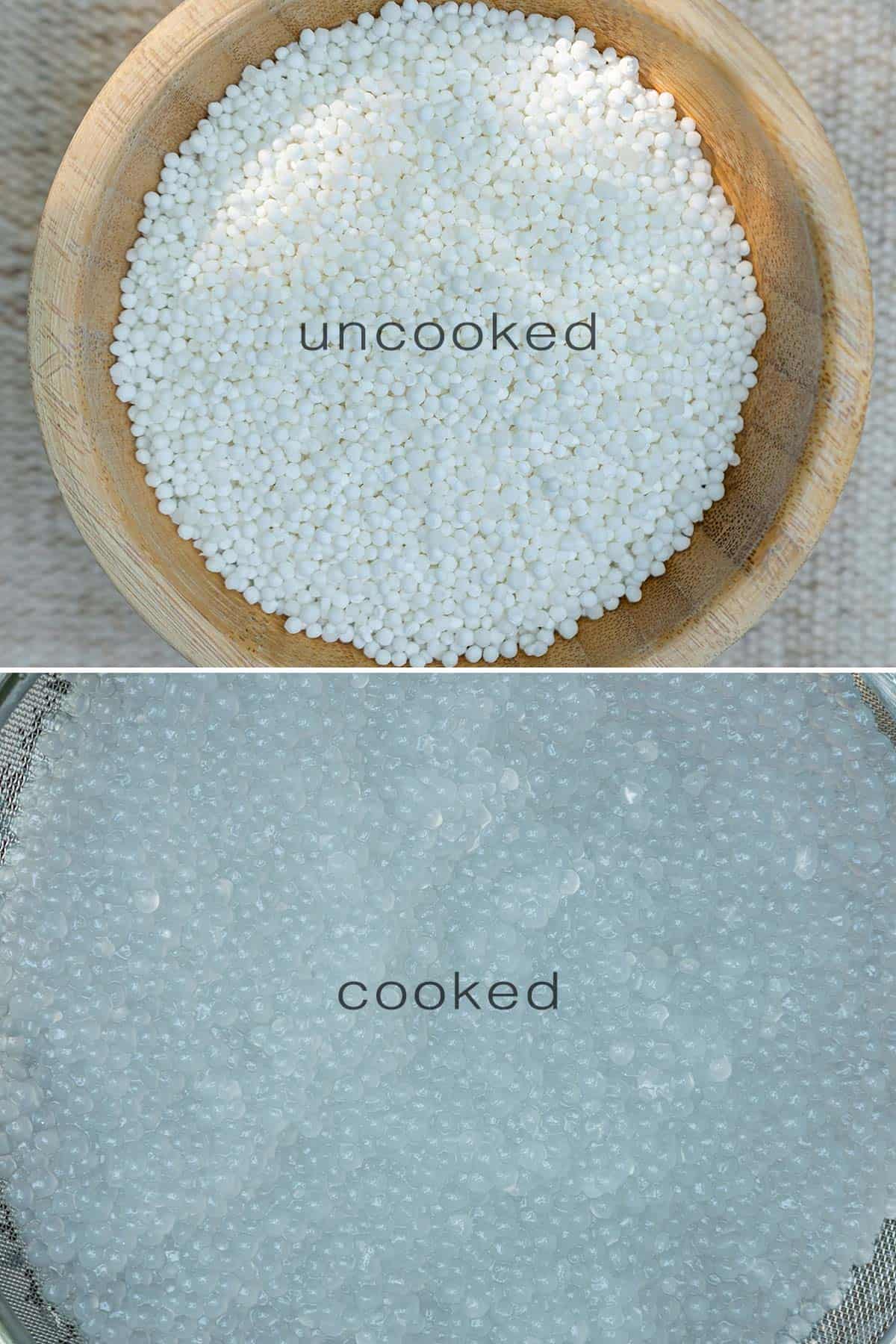
Think of them like mini mochi balls that give this creamy dessert a super satisfying texture in every bite. If you've ever had Vietnamese fruit cocktail (chè), you'll love this!
Why you'll love this recipe
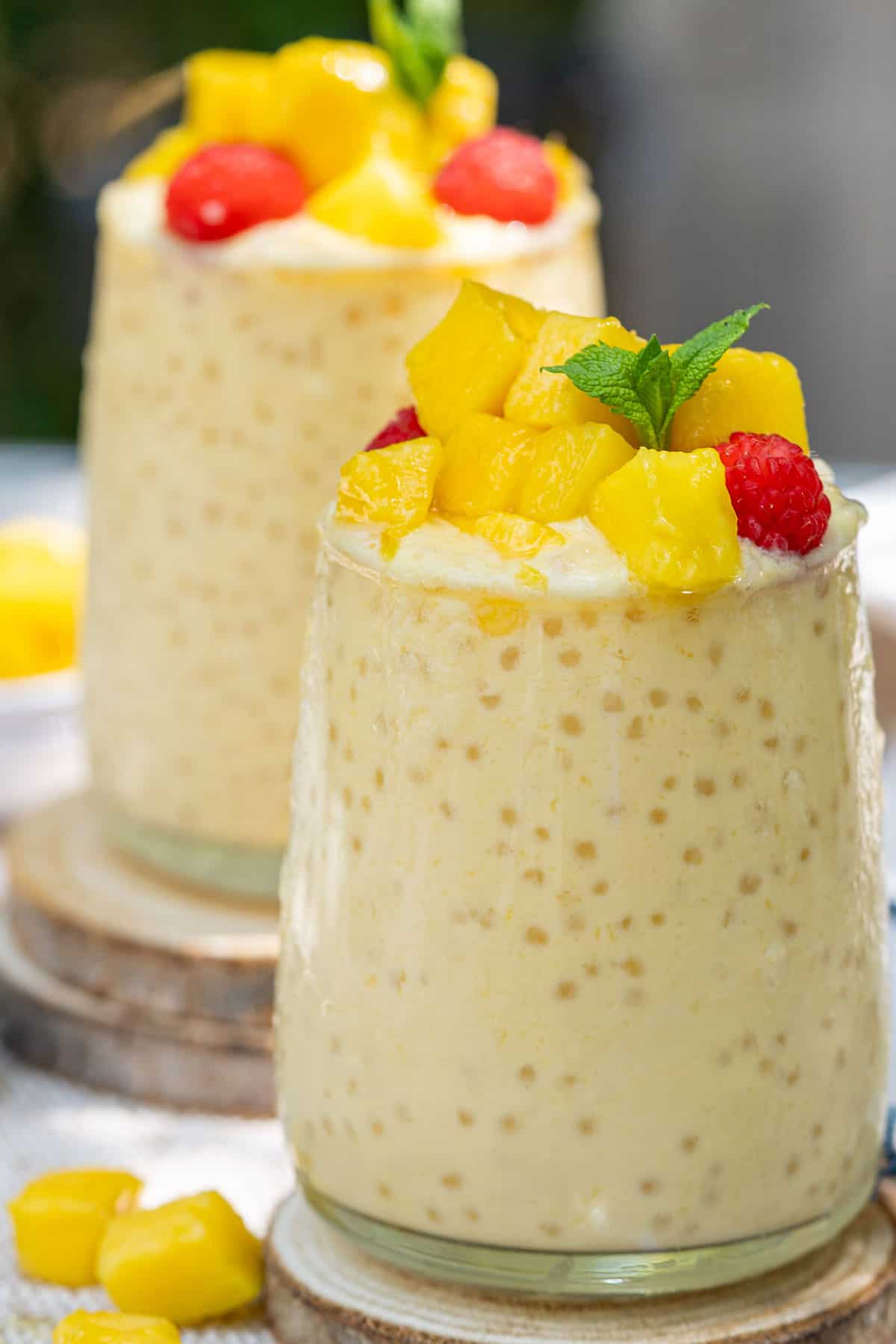
It's easy, no-bake, and make-ahead friendly-No oven, no stress-prepare this mango sago pudding up to two nights in advance and chill in the fridge. It sets beautifully and tastes way better cold.
It feels fancy, but it's budget-friendly-Tropical desserts may seem complicated, but this one uses simple ingredients: tapioca pearls, canned coconut milk, ripe mangoes, and sweetened condensed milk. That's it! Our easy berry galette recipe is also a must-make.
It's versatile and naturally gluten-free-Serve in cups, glasses, or bowls. Switch up the fruit with peaches, strawberries, or orange zest for a twist.
Ingredients you'll need
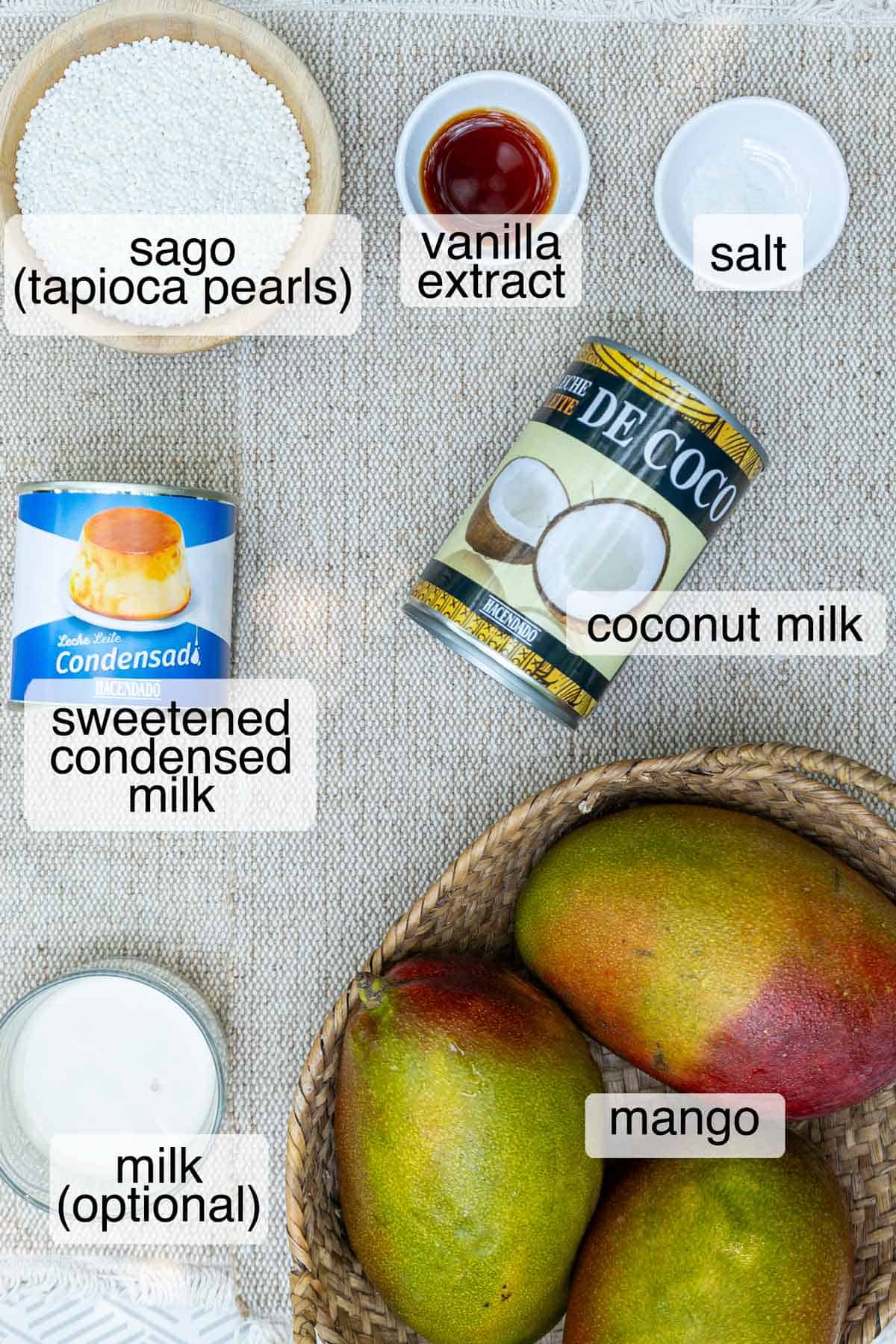
Small tapioca pearls-These little chewy bites are made from tapioca starch, which comes from the cassava root. They're what gives this mango sago pudding its signature texture-soft, bouncy, and just a little bit satisfying to bite into. Kind of like the cozy cousin of boba!
Coconut milk-The creamy base that wraps every pearl in tropical flavor-rich, dairy-free, and downright vacation-y.
Sweetened condensed milk-Built-in sweetness and silky body in one pour-no need to fuss with sugar syrup.
Ripe mangoes-2-3 ripe ones (puréed + diced). The star flavor: purée sweetens and colors the pudding, while diced bits add fresh, juicy bursts.
Salt-Tiny but mighty-sharpens all the sweet coconut-mango notes so the whole dessert tastes brighter.
Milk (optional)-Softens the texture and makes the mango sago pudding a touch looser and creamier-especially helpful if you're serving it chilled the next day. Skip it if you prefer a thicker, richer set.
See the recipe card for complete information on ingredients and quantities.
How to cook sago or tapioca pearls
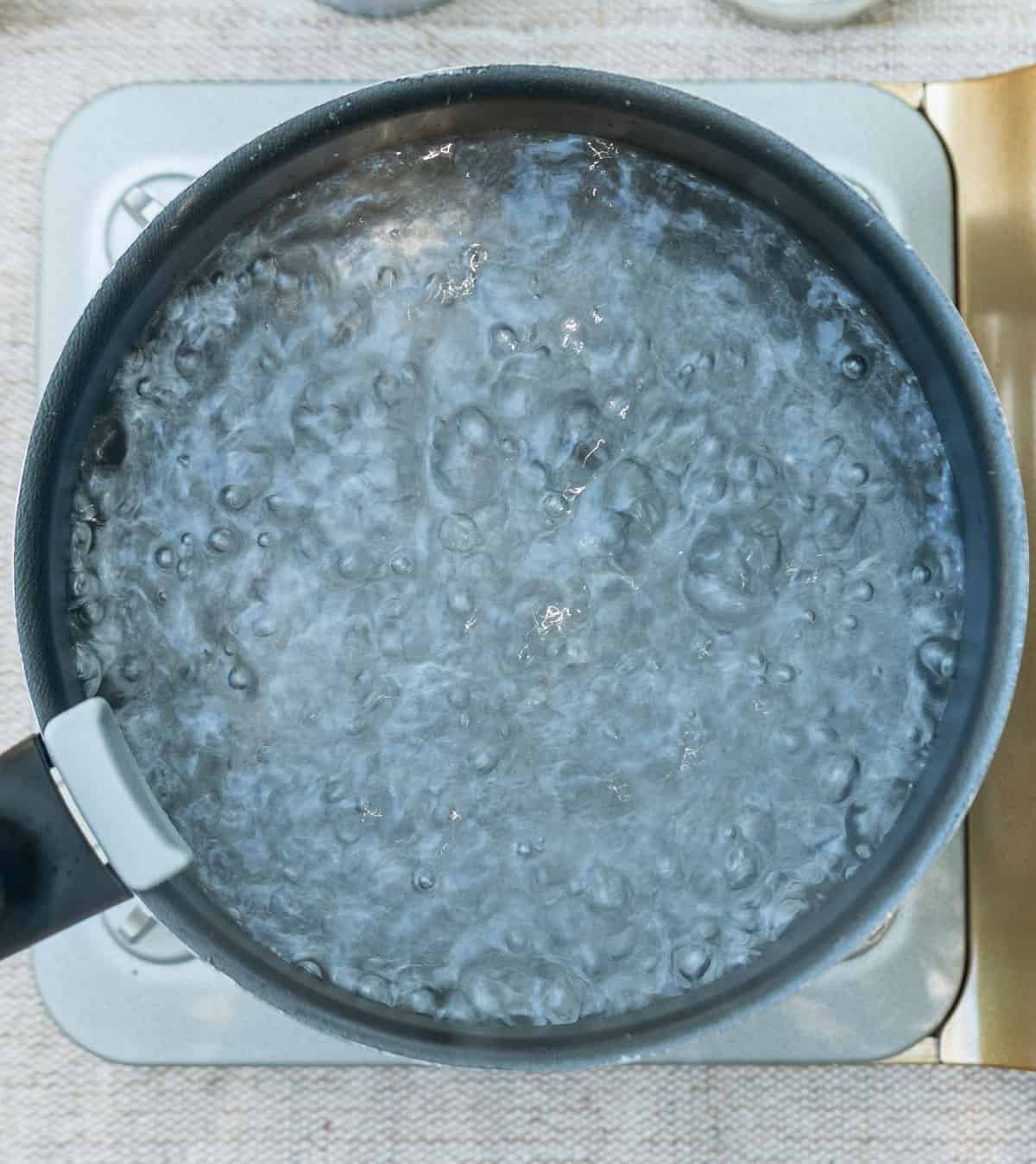
- Bring water to a rolling boil: Boil a big pot of water-about 8 times the amount of tapioca pearls. This gives the pearls space to move and cook evenly without clumping.
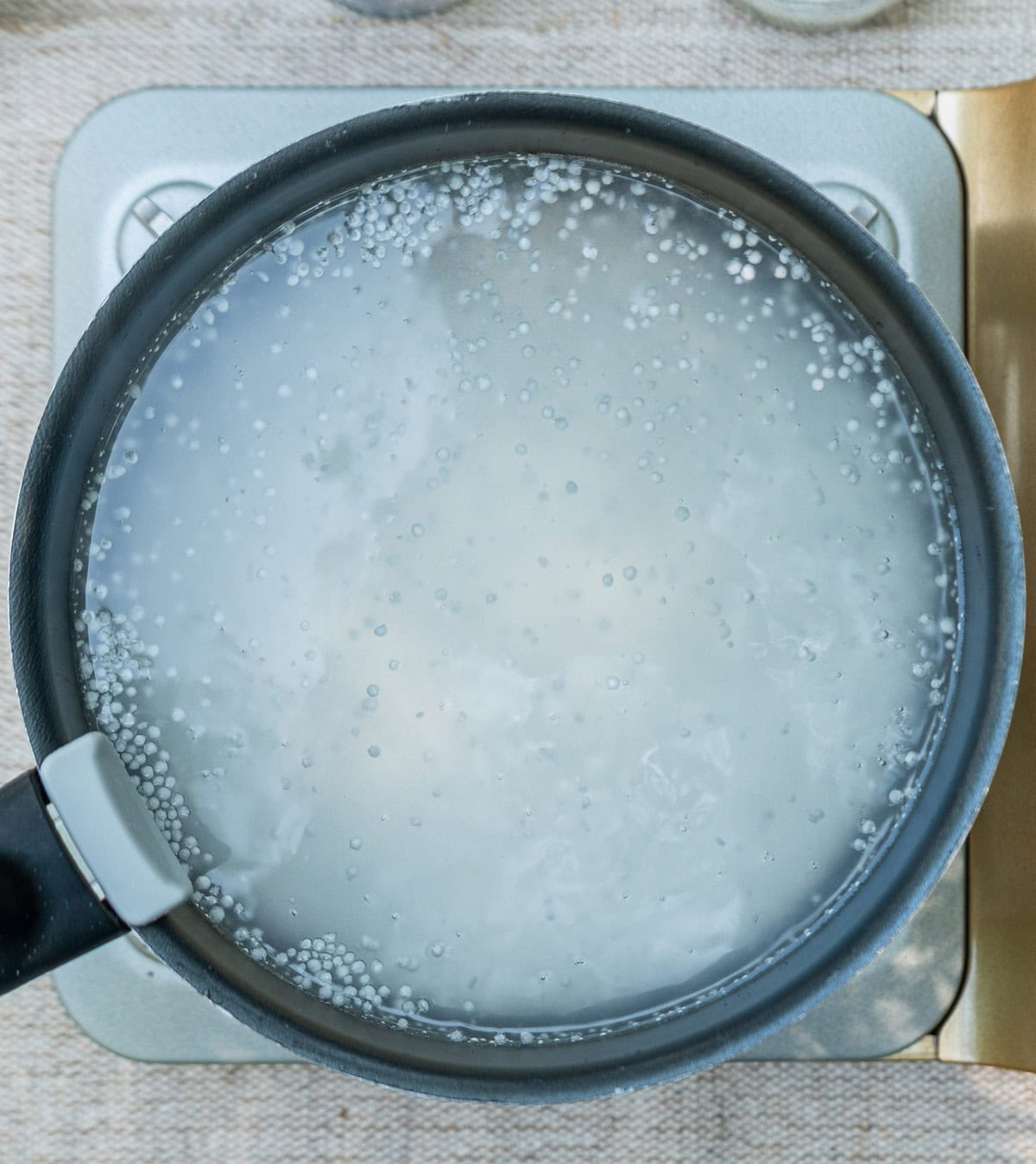
- Add pearls and stir: Pour in the tapioca pearls and stir right away to stop them from sticking to each other or the bottom of the pot.
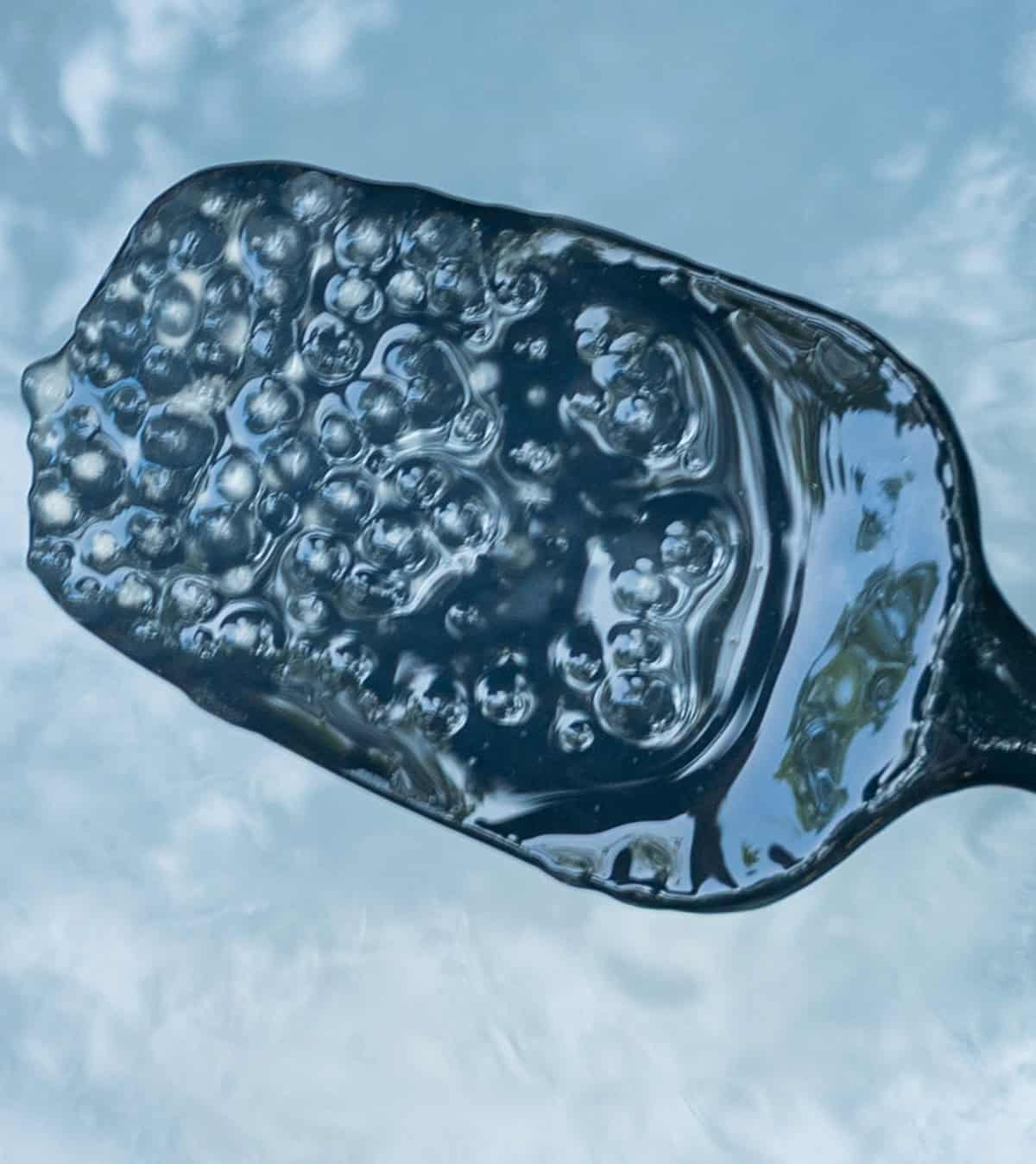
- Boil uncovered for 15 minutes: Let them softly boil on medium heat, uncovered. Stir gently a few times. They'll start turning translucent with a tiny white center-that means they're almost done.
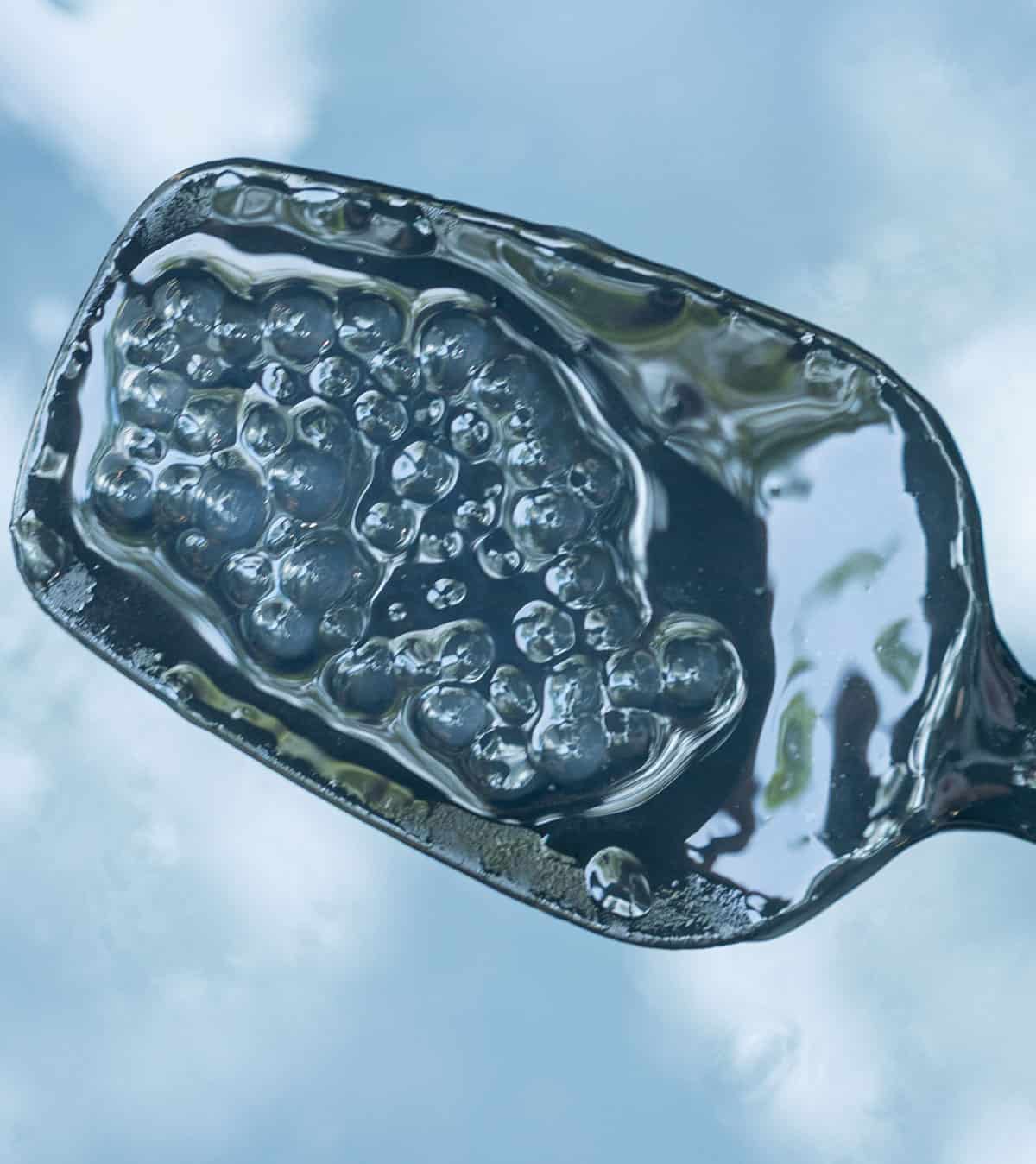
- Turn off the heat and cover for 10-20 minutes: Let the pearls sit in the hot water, covered. This finishes the cooking gently so they don't get mushy or stay raw in the middle. They should look totally transparent.
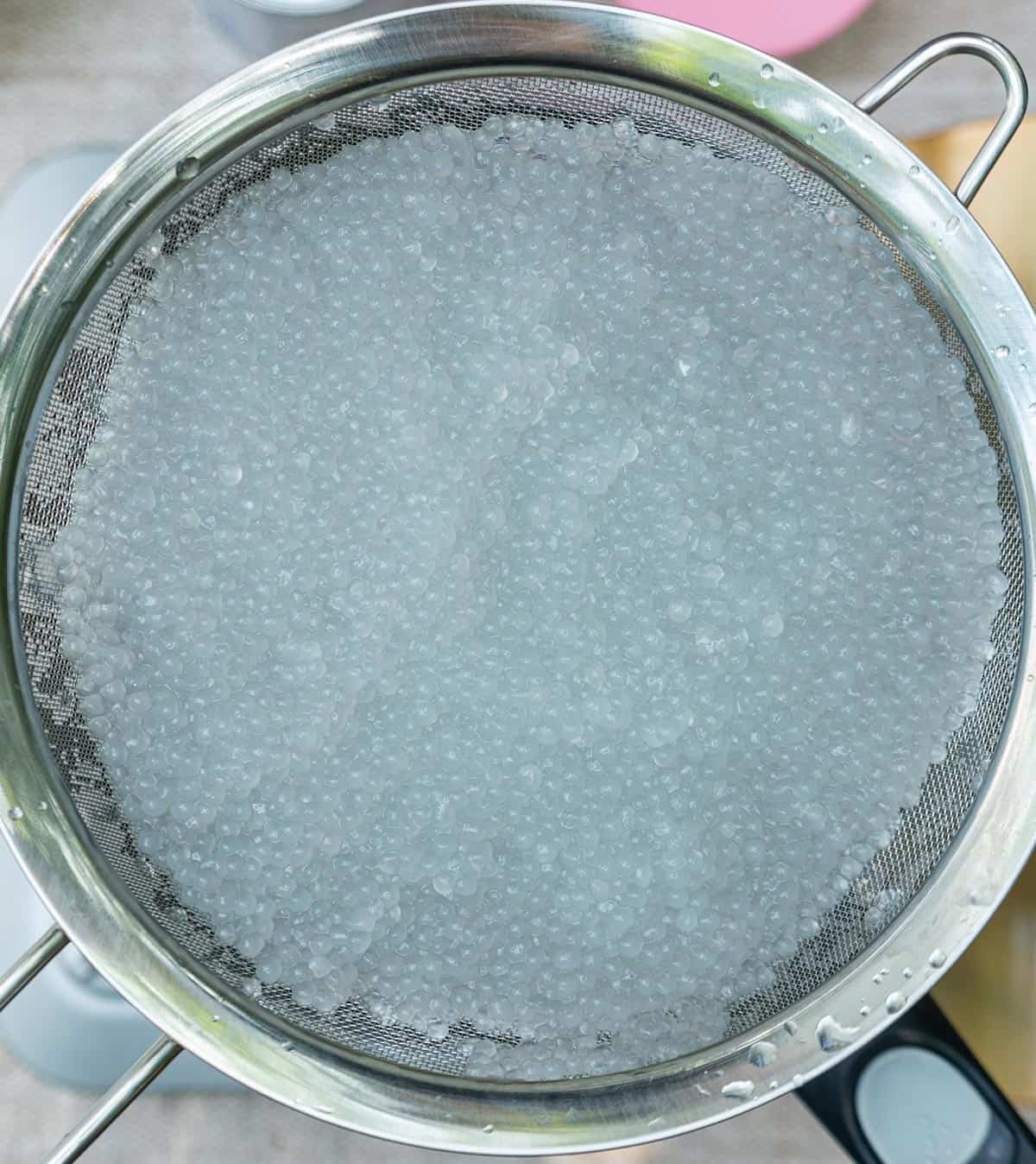
- Drain and rinse under cold water: Pour the pearls into a sieve and rinse under cold running water. This stops the cooking and removes the extra starch. Gently run your fingers through to separate them.
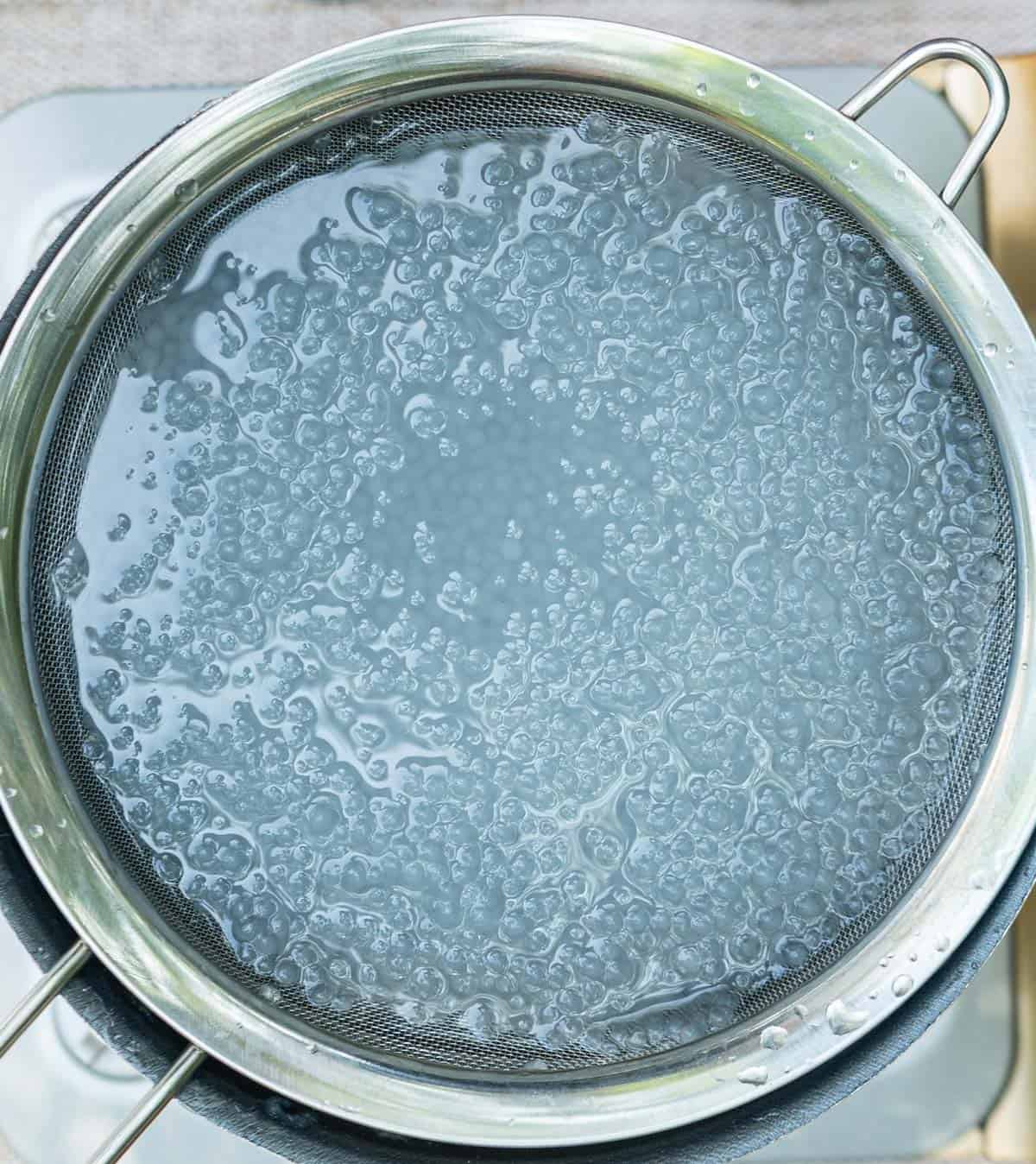
- Use right away or store in water: If you're not using them right away, store them in a bowl of cold water (covered) for up to 24 hours. Just drain before mixing into your dessert.
Substitutions and variations
No sweetened condensed milk?-Use ⅓ cup honey + ¼ cup whole milk instead. The mango sago pudding will be slightly less rich, but still sweet and satisfying.
No fresh mangoes?-Use about 2¼ to 2½ cups of frozen mango chunks (thawed) to get the same 2 cups of purée. Or go with 1¾ cups canned mango pulp-it's more concentrated and smoother, so a little goes a long way.
Berry swap-Try replacing part of the mango purée with blended strawberries or raspberries. Adds color and a tangy-sweet twist.
Watch the video recipe
Step-by-step instructions
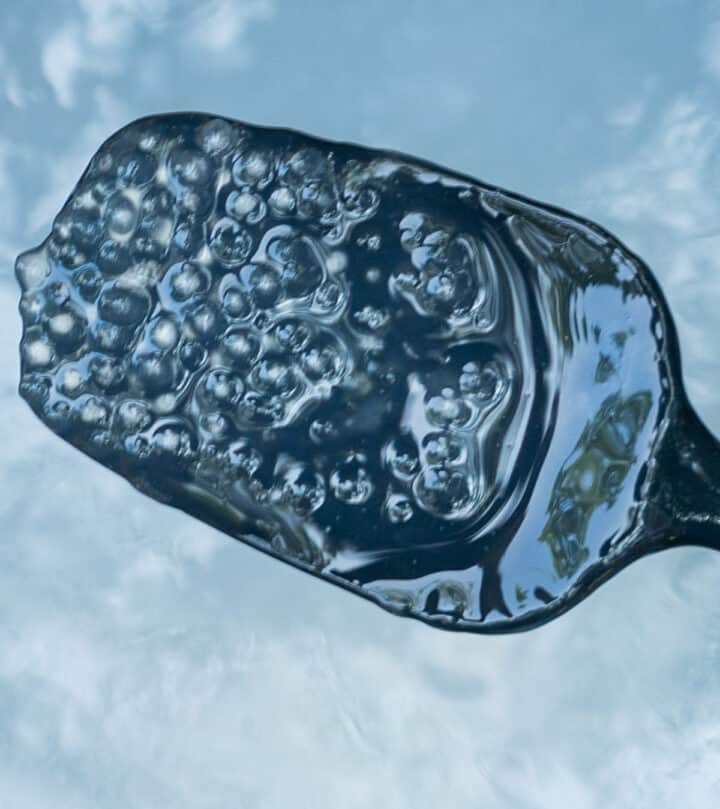
Cook the tapioca pearls
Bring a large pot of water to a rolling boil. Add small tapioca pearls and stir to prevent clumping. Boil gently for 15 minutes, stirring occasionally, until mostly translucent with a small white dot in the center. Turn off the heat, cover, and let sit for 10-20 minutes to finish cooking.
Need more help? See our "How to Cook Tapioca Pearls" section above for troubleshooting and visuals.
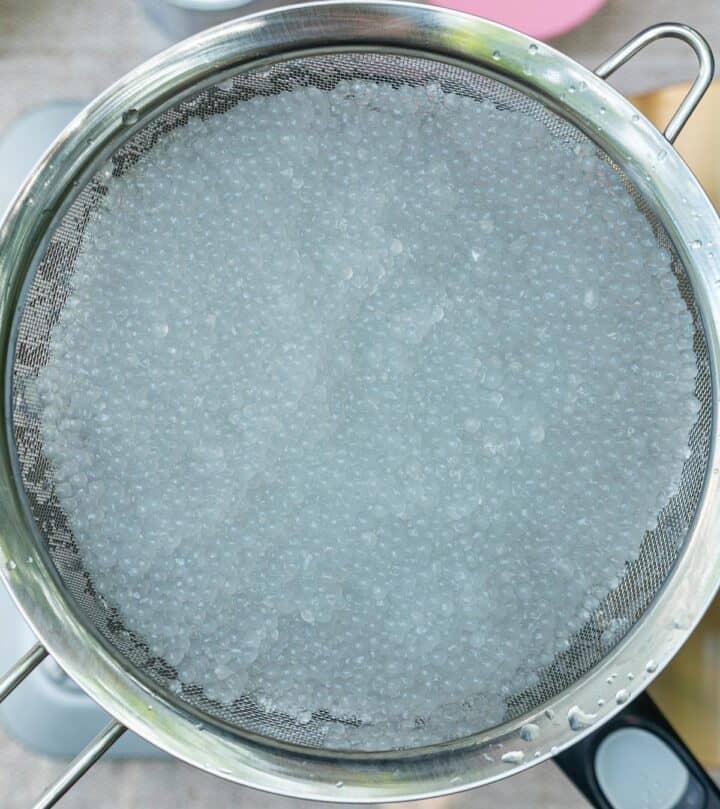
Rinse and drain
Pour the cooked pearls into a sieve and rinse well under cold water until fully cool and no starchiness remains. Set aside to drain.
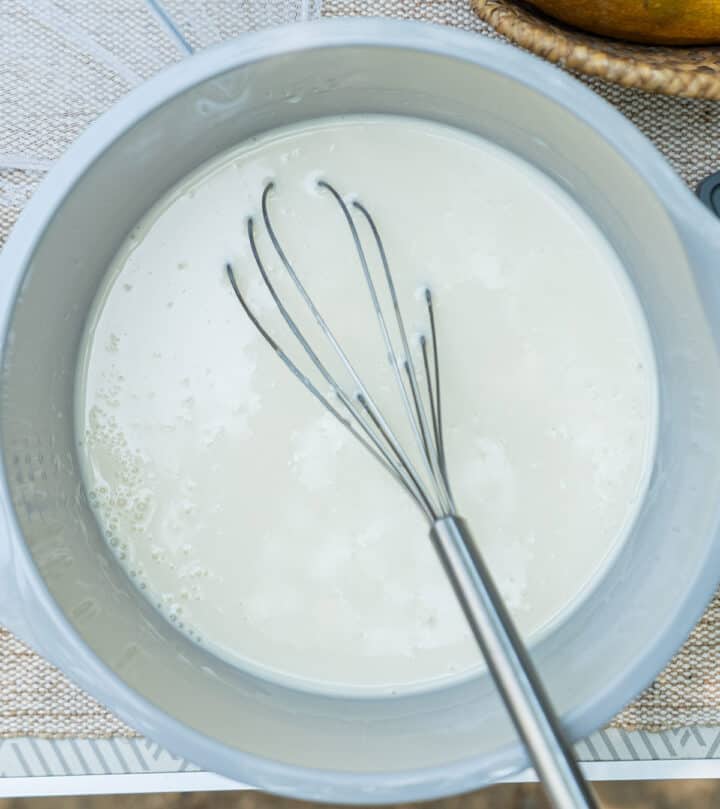
Mix the coconut base
In a large bowl or container, whisk together the coconut milk, condensed milk, milk (if using), and salt until smooth.

Prep the mango
Blend the fresh mango into a smooth purée.
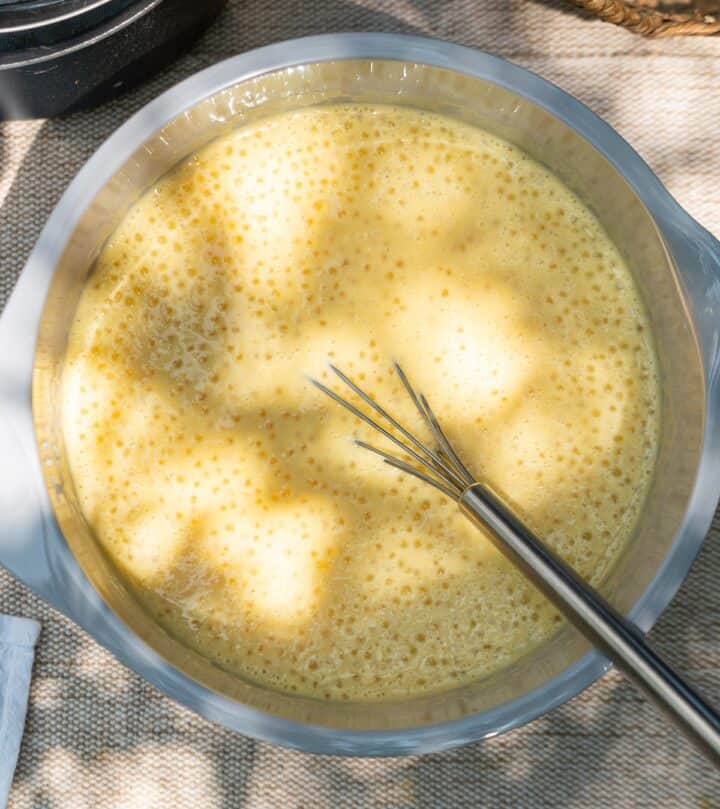
Add the pearls
Stir the mango puree and tapioca pearls into the coconut mixture.
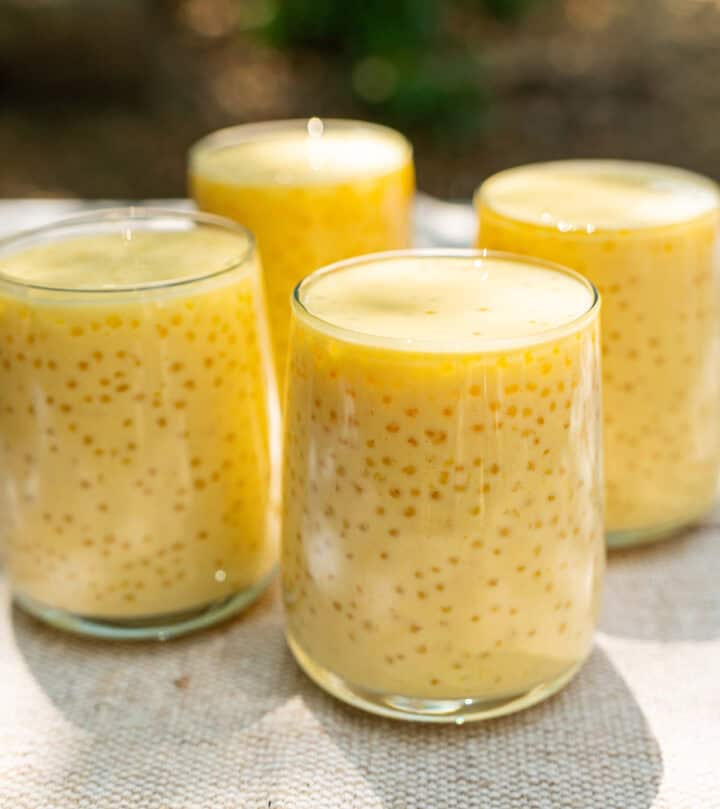
Divide and chill
Spoon the mixture into four serving glasses (about 11.5 oz / 340 ml each). Chill in the fridge for at least 4 hours, preferably overnight, for a creamy pudding-like texture. Before serving, top with cubed mango and a few raspberries for color and contrast!
Before serving this mango sago pudding, top each glass with cubed mango and a few raspberries for a fresh pop of color and contrast.
Our best tips
- Use plenty of water to cook the pearls. Tapioca pearls need room to dance! Stick to 8 parts water for every 1 part of pearls- it keeps them from sticking or turning mushy.
- Stir during the first few minutes. This is the only time they're likely to stick. After that, just let them boil gently.
- Watch for the tiny white dot. No matter the size of your pearls, cook them until a tiny white dot appears in the center (longer for larger pearls), indicating they're nearly done. Turn off the heat, cover, and let them sit for 10-20 minutes until fully translucent.
- Rinse the cooked pearls in cold water. Stops cooking instantly and rinses off the starchy coating for chewy pearls, not gummy.
- Not using them right away? Keep them in a bowl of water at room temperature. It stops them from clumping into one giant blob.
- Want it thicker or thinner? Leave out the milk for a thicker, richer texture. Add it in if you prefer a softer, creamier feel-totally up to you.
Serve, store, and make-ahead guide
Serve
- Spoon the chilled mango sago pudding into individual glasses or dessert bowls (we love using 12-oz glasses for a generous portion).
- Top with fresh mango cubes and a few raspberries for color contrast and a little tang.
- It's perfect for dinner parties, summer BBQs, or just treating yourself on a warm afternoon.
Store
- Keep any leftovers in an airtight container in the fridge for up to 3 days.
- The texture is best the next day after chilling, but the pearls can start getting too soft if stored too long.
- This mango sago pudding doesn't freeze well-the pearls get mushy and lose their bounce. For the best texture, keep it in the fridge and enjoy within a few days.
- If you're prepping ahead, store the cooked tapioca separately in water and mix everything when ready.
Make-ahead
- You can prep the full mango sago pudding 1 day in advance-just mix, portion into glasses, and chill. The texture and color stay fresh, and the pearls still have a nice chew.
- If making 2 days ahead, it's still safe and tasty, but the pearls will soften a bit, and the mango color may dull slightly. Give it a quick stir if the coconut layer separates.
- Want the freshest texture? Store the cooked pearls and coconut-mango base separately, then combine them when serving.
Frequently asked questions
They need more simmer time. Keep boiling until only a tiny white dot remains (larger pearls take longer); then cover and let it rest off the heat for 10-20 minutes so the center finishes cooking.
Use plenty of water (8× the pearl volume) and stir during the first minute of cooking. Pearls only stick when they're crowded or idle at the bottom.
Absolutely. Use 2 ¼-2 ½ cups thawed frozen chunks (blended) to make 2 cups purée, or 1 ¾ cups canned mango pulp-it's more concentrated, so you need a little less
Half a cup gives classic café sweetness. For a lighter version, use ⅓ cup condensed milk + 2 tablespoon regular milk-just as creamy, less sugar.
Safe to eat, but the pearls will be softer and the color less vibrant. For best texture, store the cooked pearls in water and the coconut-mango base separately, then combine a few hours before serving. Refer to our "Make-ahead" section above for more details.
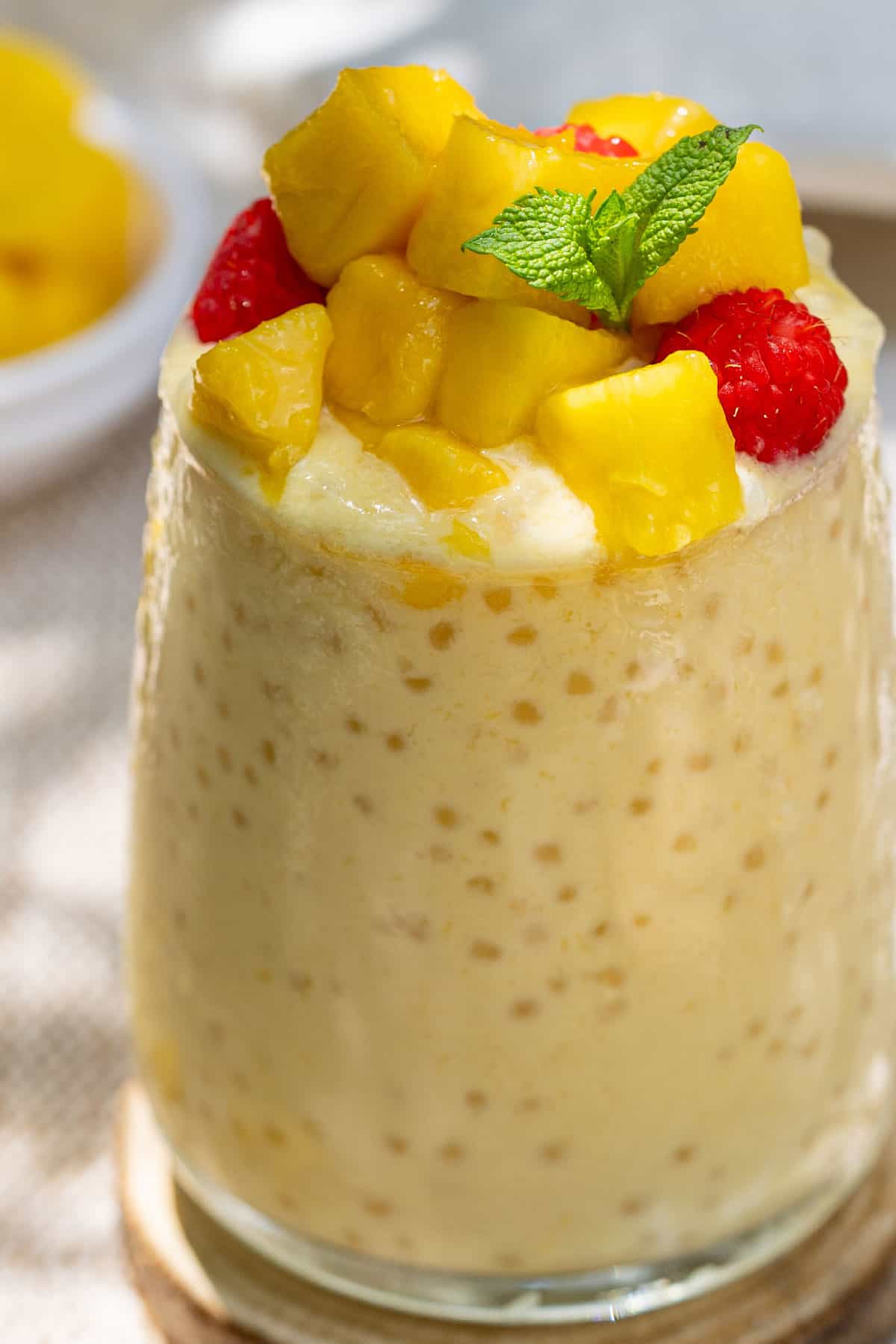
Did you try this mango sago pudding?
We'd love to hear from you! Leave us a ★★★★★ rating and drop a comment below - tell us how it went, what you enjoyed, or what you'd tweak. And if you share it on Instagram, don't forget to tag us - we'd love to see them!
Thank you! -Bea and Marco
📖 Recipe
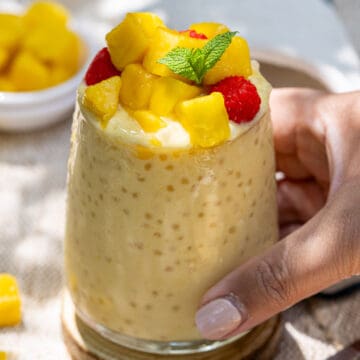
Mango Sago Pudding
Video
Ingredients
- ¾ cup (125 g) small tapioca pearls
- 1 can (400 g) coconut milk
- ½ cup (150 g) sweetened condensed milk
- 1 teaspoon vanilla extract
- ½ teaspoon salt
- ¼ cup (60 ml) whole mik optional to loosen the texture
- 2-3 (1.2 kg) ripe mangoes around 2½lb whole mangoes in total
Instructions
Cook tapioca pearls
- Boil a big pot of water-about 8 times the amount of tapioca pearls. For ¾ cup (125g) pearls, that's roughly 6 cups (1.4 L) of water. This gives the pearls space to move and cook evenly without clumping.¾ cup small tapioca pearls
- Add the small tapioca pearls and stir immediately to prevent clumping. Boil gently, uncovered, on medium heat for 15 minutes, stirring now and then.
- The pearls should look mostly translucent with just a tiny white dot in the center. Turn off the heat, cover, and let sit for 10-20 minutes to finish cooking. The pearls should look totally transparent.
- Pour pearls into a fine strainer; rinse under cold water until fully cool and the water runs clear. Set aside to drain.
- Need more help? See our "How to cook sago or tapioca pearls (perfect every time)" section above for troubleshooting and visuals.
Make the base
- In a medium bowl, whisk together coconut milk, sweetened condensed milk, whole milk (optional), vanilla extract, and salt until smooth.1 can coconut milk, ½ cup sweetened condensed milk, 1 teaspoon vanilla extract, ½ teaspoon salt, ¼ cup whole mik
- Blend the fresh mango into a smooth purée. It's about 2 medium-sized mango.2-3 ripe mangoes
- Stir the mango puree and tapioca pearls into the coconut mixture.
Divide and chill
- Spoon the mixture evenly into 4 serving glasses (about 11.5 oz / 340 ml each) for a generous, satisfying dessert. Cover and chill in the fridge for at least 4 hours, but overnight is even better for that creamy, pudding-like texture.
- Before serving, top each glass with cubed mango and a few raspberries for a fresh pop of color and contrast.
Notes
- Use plenty of water to cook the pearls. Tapioca pearls need room to dance! Stick to 8 parts water for every 1 part of pearls- it keeps them from sticking or turning mushy.
- Stir during the first few minutes. This is the only time they're likely to stick. After that, just let them boil gently.
- Watch for the tiny white dot. No matter the size of your pearls, cook them until a tiny white dot appears in the center (longer for larger pearls), indicating they're nearly done. Turn off the heat, cover, and let them sit for 10-20 minutes until fully translucent.
- Rinse the cooked pearls in cold water. Stops cooking instantly and rinses off the starchy coating for chewy pearls, not gummy.
- Not using them right away? Keep them in a bowl of water at room temperature. It stops them from clumping into one giant blob.
- Want it thicker or thinner? Leave out the milk for a thicker, richer texture. Add it in if you prefer a softer, creamier feel-totally up to you.
Nutrition Facts
The nutrition facts provided are an estimate per serving. Accuracy is not guaranteed.






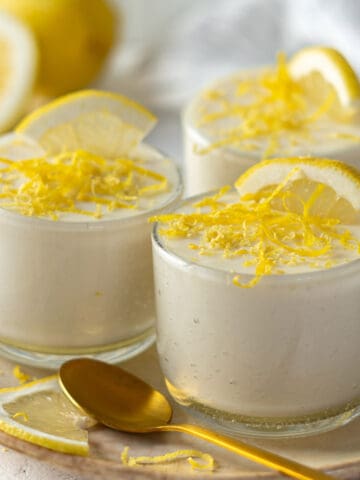

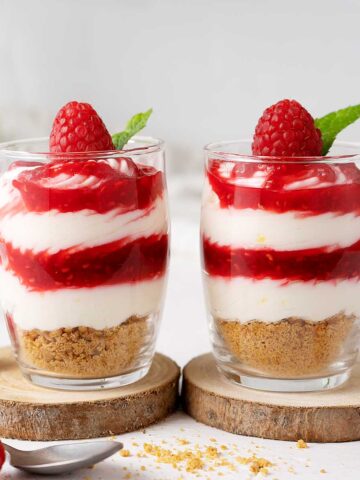


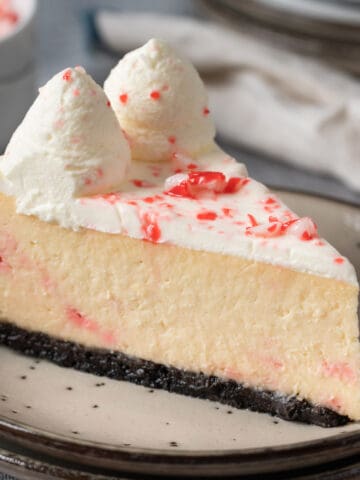

Bea & Marco says
We made this both in our studio and while camping—and it turned out amazing each time. It’s simple, cozy, and super doable. Can’t wait to hear what you think! 💛